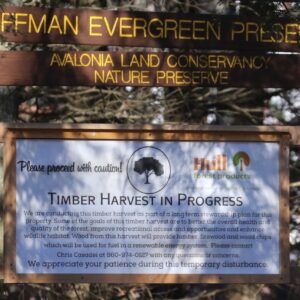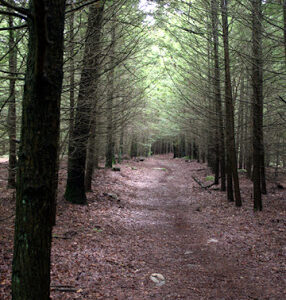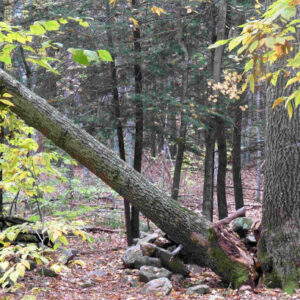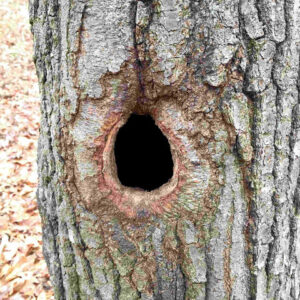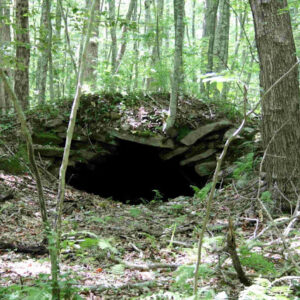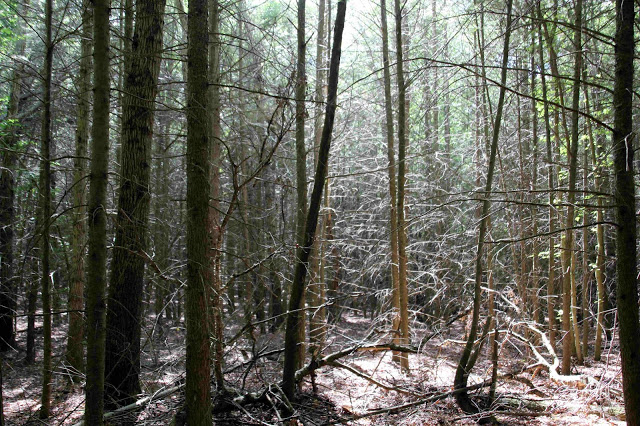
Hoffman Harvest: Restoration Begins
Above: Trees planted fifty years ago are dead or dying. (Photo Beth Sullivan)
If you have hiked in a state park recently, you may have noticed the Connecticut Department of Energy and Environmental Protection (CT DEEP) signs on the trails warning you to beware of distressed, dying or dead trees due to severe storms, drought, and invasive insects and plants throughout Connecticut.
Avalonia’s Hoffman Evergreen Preserve in Stonington is no exception. The hemlocks that were planted more than 50 years ago are now too crowded to thrive. Many have died and some have succumbed to the woolly adelgid, an invasive insect. There is little new green plant life beneath them.
The beautiful oaks that rose above the hemlocks have also been devastated by insects. Gypsy moths and winter moths have defoliated them for several seasons in a row. Severe drought conditions at the same time stressed them to death, literally. Now storm winds are breaking and toppling them. The forest has become dangerous to hikers and to the stewards who try to keep the trails open. It has also become a fire hazard.
In the last three years, we have had several teams of experts come to evaluate the preserve. CT DEEP foresters and biologists have walked Hoffman and given their recommendations. Connecticut Audubon sent in a special team to assess not only the health of the plant life, but the bird life as well, and prepared a very detailed report with their recommendation for action. Currently, we have a professional forestry company willing to help find the best way forward. Every single one of these reports agree: We can save the future integrity of the forest if we take action now.
Avalonia has a plan to begin the restoration of many areas of the preserve. Dead and crowded hemlocks will be removed and thinned to create healthy space for new ones to expand and grow. Dead and dying oaks will be removed while their wood is still of some use and before more large trees fall onto the trails. Areas where the pines were destroyed by the high winds and heavy snows of past winters will be cut. This will allow seedlings below to grow and thrive. Openings will be created to allow dense shrubs to flourish. These shrubs will include berry bushes that will provide food and shelter sources for a variety of species. The proposed work will avoid wetlands, slopes and sensitive areas. Some dead trees and snags will remain for wildlife use in places that will not endanger trails.
The transition will be dramatic, and we ask the community’s understanding and support while the project is going on. The preserve will be closed until further notice, allowing the work to be done safely. In years to come, this effort will bear fruit in the form of a healthier, safer and more beautiful forest for us and the wildlife to enjoy.
We will continue to update the public on this project and the recovery of a forest that was given to us so many years ago. There will be many stewardship opportunities, so if you wish to join and volunteer for Avalonia, please go here.

